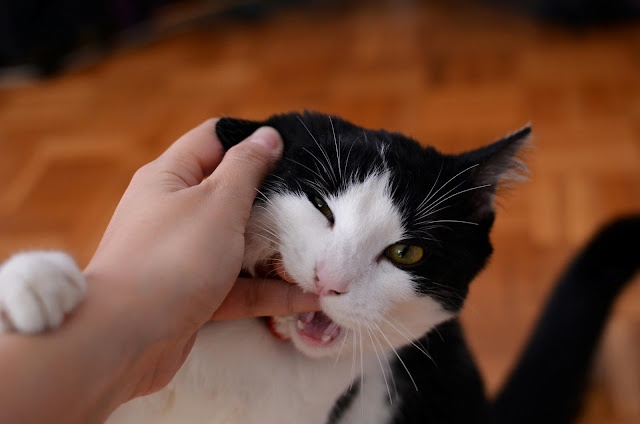How to Choose the Best Cat Food for Your Pet’s Needs
How to Choose the Best Cat Food for Your Pet’s Needs
Choosing the right cat food is essential for your pet's overall health, energy levels, and longevity. With so many options on the market, selecting the best one can be overwhelming. Whether your cat is a picky eater, has specific health concerns, or you’re just aiming to provide the best nutrition possible, this guide will help you make an informed decision. Here’s everything you need to know about choosing the best cat food for your feline friend’s needs.
1. Understand Your Cat’s Life Stage
Cats have different nutritional needs based on their age. When choosing cat food, it’s important to select one that aligns with your pet’s current life stage:
- Kittens: Require food rich in protein and fat for growth and energy.
- Adult Cats: Need balanced nutrients to maintain weight and health.
- Senior Cats: Benefit from lower-calorie food to avoid weight gain and ingredients that support joint health.
Look for labels such as "kitten," "adult," or "senior" on the cat food packaging to ensure you're selecting the right formula.
2. Check the Ingredients List
When choosing cat food, always check the ingredients list. Cats are obligate carnivores, which means they require a diet rich in animal protein. Look for the following:
- High-Quality Protein: Chicken, turkey, fish, or beef should be one of the first ingredients.
- Taurine: An essential amino acid that supports heart and eye health.
- Healthy Fats: Omega-3 and Omega-6 fatty acids for a shiny coat and skin health.
Avoid foods that list fillers like corn, wheat, or soy as the main ingredients. These provide little nutritional value and can lead to weight gain or digestive issues.
3. Wet vs. Dry Cat Food
Both wet and dry cat food have their pros and cons, and the choice depends on your cat’s specific needs.
Wet Cat Food: Higher moisture content helps with hydration, making it ideal for cats with urinary or kidney issues. Wet food also tends to be more palatable for picky eaters.
Dry Cat Food: Convenient and often more affordable, dry food helps maintain dental health by reducing tartar buildup. However, it lacks the moisture content of wet food, so make sure your cat drinks enough water.
Many cat owners opt for a combination of both wet and dry food to balance the benefits.
4. Consider Special Dietary Needs
Weight Management: Look for cat food labeled as "weight control" or "light" if your cat is overweight. These formulas are lower in calories but still provide essential nutrients.
Sensitive Stomachs: Cats with digestive issues may benefit from foods labeled "limited ingredient" or "sensitive stomach." These are made with easily digestible proteins and carbs.
Allergies: If your cat has food allergies, look for hypoallergenic formulas with limited ingredients, avoiding common allergens like chicken or grains.
5. Grain-Free vs. Grain-Inclusive
There’s been much debate about grain-free cat food. While some cats do better on grain-free diets, others have no issues with grains. If your cat has a grain sensitivity, grain-free food might be a good option, but for most cats, a grain-inclusive diet is perfectly fine.
- Grain-Free: Typically made with more animal protein and fewer carbohydrates.
- Grain-Inclusive: May include rice, oats, or barley, which can be part of a balanced diet for cats without sensitivities.
Consult your vet if you're unsure which is best for your cat.
6. Look for AAFCO Approval
When choosing a cat food, make sure it meets the nutritional standards set by the Association of American Feed Control Officials (AAFCO). This ensures the food is complete and balanced for your cat’s specific life stage.
7. Transition to New Cat Food Slowly
If you're switching your cat's food, make sure to transition slowly to avoid digestive upset. Gradually mix the new food with the old food over a period of 7-10 days, increasing the proportion of new food each day.
8. Pay Attention to Your Cat’s Preferences
Cats can be notoriously picky eaters, so it’s important to pay attention to their preferences. If your cat refuses to eat a particular food, try offering a different flavor or texture. Some cats prefer pate-style wet food, while others enjoy chunks or shreds.
9. Monitor Your Cat’s Health
Once you’ve chosen the best food for your cat, monitor their health and behavior. Look for signs of improvement in their coat condition, energy levels, and overall well-being. If your cat shows signs of digestive upset, weight gain, or lethargy, consult your vet to reassess their diet.
10. Consult Your Vet for Personalized Advice
Finally, the best way to choose the right cat food for your pet is to consult your veterinarian. Your vet can provide personalized recommendations based on your cat’s age, weight, health conditions, and lifestyle. Regular check-ups also ensure that your cat is receiving the proper nutrition throughout their life.
Conclusion: Your Cat’s Diet Matters
Choosing the best cat food for your pet’s needs can seem daunting, but by considering their life stage, health, and preferences, you can provide them with the balanced nutrition they need to thrive. Always opt for high-quality, protein-rich food, and consult your vet if you have any concerns. A healthy diet is the foundation of a happy and healthy cat.
.png)




.jpeg)



